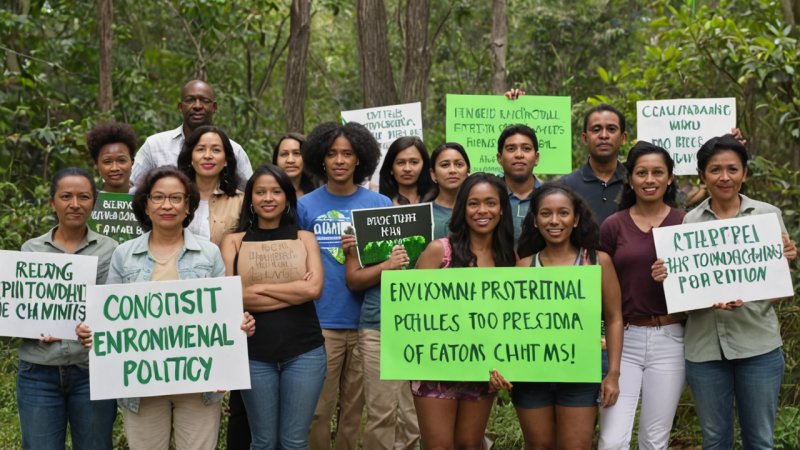Introduction
In a world increasingly affected by environmental challenges, influencing policy changes for environmental protection is crucial. This article will guide you through the steps you can take to become an effective advocate for environmental policies. You will learn how to research existing policies, engage with decision-makers, mobilize community support, and leverage social media to drive change.
Step 1: Research Existing Policies
Before you can influence policy changes, you need to understand the current landscape. Here’s how to start:
- Identify Relevant Policies: Focus on local, national, and international policies that impact environmental protection.
- Analyze the Policies: Read through the policies to understand their goals, strengths, and weaknesses.
- Gather Data: Collect statistics, case studies, and expert opinions to support your arguments.
- Stay Updated: Follow environmental news to keep track of new developments and changes in policy.
Step 2: Engage with Decision-Makers
Building relationships with policymakers is vital for influencing change. Follow these steps to engage effectively:
- Identify Key Decision-Makers: Research who holds the power to enact change in your area, such as local representatives or congressional members.
- Reach Out: Send emails, make phone calls, or schedule meetings to introduce yourself and express your concerns.
- Prepare Your Message: Clearly articulate your position on environmental issues and specific policy changes you support.
- Follow Up: After initial contact, follow up to keep the conversation going and show your commitment.
Step 3: Mobilize Community Support
Community backing can amplify your voice in advocating for policy changes. Here’s how to mobilize support:
- Organize Community Meetings: Host gatherings to discuss environmental issues and potential solutions.
- Create Petitions: Develop petitions that call for specific policy changes and encourage community members to sign.
- Collaborate with Local Organizations: Partner with environmental groups to strengthen your advocacy efforts.
- Utilize Local Media: Write op-eds or letters to the editor to raise awareness about the issues and gather support.
Step 4: Leverage Social Media
Social media can be a powerful tool for advocacy. Here’s how to use it effectively:
- Choose the Right Platforms: Identify which social media platforms are most popular in your community (e.g., Facebook, Twitter, Instagram).
- Create Engaging Content: Share articles, infographics, and videos that highlight environmental issues and proposed policy changes.
- Use Hashtags: Incorporate relevant hashtags to increase visibility and engage with broader conversations.
- Encourage Sharing: Ask your followers to share your posts to reach a larger audience.
Step 5: Monitor Progress and Stay Involved
Advocacy is an ongoing process. Here’s how to monitor your efforts:
- Track Policy Changes: Stay informed about any developments regarding the policies you are advocating for.
- Evaluate Your Impact: Assess the effectiveness of your advocacy efforts and adjust your strategies as necessary.
- Continue Engagement: Maintain relationships with policymakers and community members to foster ongoing dialogue.
- Educate Others: Share your knowledge and experiences to inspire more people to get involved in environmental advocacy.
Conclusion
Influencing policy changes for environmental protection requires dedication, research, and community engagement. By following these steps—researching existing policies, engaging with decision-makers, mobilizing community support, leveraging social media, and monitoring progress—you can play an essential role in advocating for a healthier planet. Remember, every action counts, and your voice can make a significant difference.






